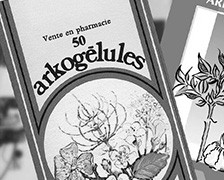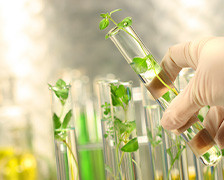Vitamins: natural or synthetic?

Different chemical structures
Indeed, the chemical structure of a molecule can determine its absorption, transport, storage or even its deterioration and therefore determine its overall effect. The following table lists the structural differences frequently encountered between natural vitamins and minerals and synthetic vitamins and minerals (1-2).
|
Vitamins / Minerals Salts |
Natural |
Synthetic |
|---|---|---|
|
Vitamin B1 |
Free or esterified thiamin. Unphosphorylated. |
Thiamin mononitrate or thiamin hydrochloride |
|
Vitamin B2 |
Riboflavin linked to coenzymes |
Isolated riboflavin |
|
Vitamin B3 |
Nicotinamides linked to coenzymes, nicotinic acid |
Niacin, nicotinic acid, nicotinamides |
|
Vitamin B5 |
Pantothenic acid linked to coenzymes, pantothenate |
Pantothenic acid, pantothenol, calcium pantothenate |
|
Vitamin B6 |
Free or glycosylated pyridoxine |
Pyridoxine hydrochloride or pyridoxamine |
|
Vitamin B9 |
Folates (polyglutamates) |
Folic acid (monoglutamate) |
|
Vitamin C |
L-ascorbic acid, dehydro-L ascorbic acid |
Ascorbic acid, sodium ascorbate |
|
Vitamin E |
RRR-α-tocopherol and the beta, gamma and delta forms, tocotrienols |
8 stereoisomers of α-tocopherol (racemic mixture), tocopheryl acetate |
|
Minerals |
Organic salts |
Inorganic salts |
The two major categories for sources of trace elements and minerals are inorganic salts and organic sources.
Among the common inorganic salts are: sulphates, oxides, chlorides and then the carbonates of the elements involved. The other category, organic, often uses the denomination “chelates”, which refers to the form linked to amino acids, proteins, polysaccharide complexes or the complexes derived from yeasts.
| These forms generally allow an improvement in intestinal absorption and bioavailability because they stabilize and make the organic salts less reactive in the digestive tract.
A synergy of action with co-nutrients
Generally speaking, natural vitamins extracted from plants (fruits, aromatic herbs, etc.) are in forms that are not only compatible with human physiology, but are also combined with other natural compounds present in the original matrix, and resulting from the extraction: co-factors, minerals, polyphenols, etc.
This combination is like a food matrix, promoting the synergy of the active ingredients present in the extract in terms of bioavailability and in the expected physiological effects.
In a randomized, placebo-controlled clinical trial, eight non-smokers aged between 18 and 41 were given ascorbic acid, or a lemon extract enriched with vitamin C. Bioavailability was assessed by measurement of vitamin C plasma levels.
In this study, the scientists were able to note that ascorbic acid combined with lemon extract was 35% more bioavailable than ascorbic acid alone (3).
Richard COLL, Formulation expert
Bibliography :
(1) Thiel RJ. Natural vitamins may be superior to synthetic ones. Med Hypotheses 2000;55(6):461-9.
(2) Bourgeois C. Les vitamines dans les industries agro-alimentaires. Paris : Editions Tec&Doc, 2003.
(3) Vinson JA et al. Comparative bioavailability of humans to ascorbic acid alone or in a citrus extract. Am J Clin Nutr 1988;48:601-4.




